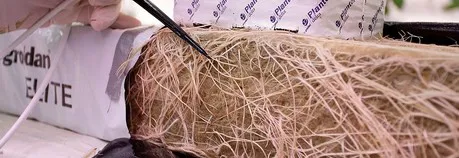Research has confirmed that growers can work with a higher sodium concentration in their root environment. This is especially true when, during cultivation, the EC increases in which case the amount of sodium can also increase. Take for example bell peppers which can increase to 10 millimoles per liter, for tomatoes it can even go as high as 12 to 16 millimole per liter. This marks an increase of between 60 and 70%.
Geert van der Lught (advisor crops, water, and plant nourishment) presupposes a comparable increase in other crops as well, given that the crop is not sensitive to salt. There does however need to remain a certain amount of EC for the nutrients. It really differs per crop, but only by 1.5-2.5 mS/ cm.

It’s a good thing that there is some wiggle room for increasing sodium figures, but what exactly does this mean for the cultivation and irrigation? When we start to calculate we find that; With a sodium figure of 6 millimoles per liter, around 8 kilograms of sodium per hectares can be found in the root environment. With a higher sodium figure of 10 millimoles per liter, this becomes 14 kilograms of sodium. The wiggle room is then around 6 kilograms of sodium.
Read more about this at Glastuinbouw Waterproof where Geerten further explains the wiggle room as he sees it and the developing of crops with higher salt tolerance.
